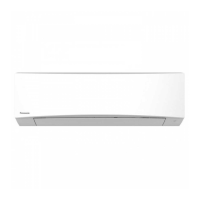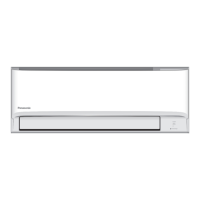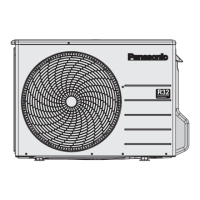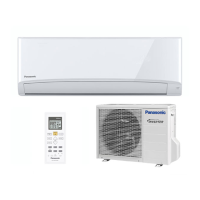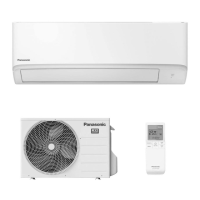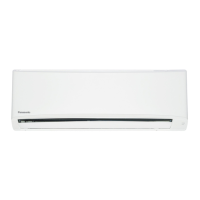95
13.7 Repairing of refrigerant cycle / Brazing point
13.7.1 Preparation for repairing of refrigerant cycle / brazing
Brazing which is a technique needed for repairing refrigerant cycle requires advanced technique and experience, and
this brazing procedure can only be performed by the workers who completed “Gas Welding Skill Training” regulated
by the Occupational Safety and Health Act, and went through the training programs of refrigerant operations.
Dismantling and re-connecting (assembling) refrigerant system requires working space, and the space has to ensure
good air flow and fire prevention (water bucket and fire extinguisher). Moreover, the worker has to ensure the
wearing of goggles, grabs, safety shoes, and long sleeve shirts, and be aware of work safety and attempt to prevent
secondary defect (quality assurance of products). For brazing the indoor / outdoor unit structural components (heat
exchangers, compressors, expansion valves, four-way valve blocks), after the recovery of all refrigerant, confirm that
no refrigerant remains in the system, and fully open the 2-way and 3-way valves. When the brazing is conducted
outside, check and make sure no refrigerant is contained in the air (be careful with vaporized refrigerant).
Furthermore, protect the compressor terminal with metal plates, and heat but use wet clothes to cool down (releasing
the heat) the expansion valves, and four way valves (prevent destruction of parts). In brazing, it is important to pour
the brazing material without melting the base metal based on capillary action principle. In case of holes and oxidizing
caused by overheating, do not perform re-brazing or alteration but replace the parts.
13.7.2 Adjustment of vacuum pump pressure
1. Cylinder with adjustment handle
1. Check and confirm the adjustment handle of the 1
st
pressure adjuster is loosen (anticlockwise). If cylinder
valve is opened when the 1
st
gauge pressure adjust handle is closed, the 2
nd
gauge might get broken.
2. Open the cylinder valve, and check the remaining amount with the first t side pressure gauge.
3. Check the pressure of 2
nd
gauge and turn the adjustment handle to clock-wise direction to adjust the
pressure.
◎ Oxygen 2
nd
side gauge pressure・・・・・・・・・・0.5 MPa (5.0 kgf / cm
2
)
◎ Propane 2
nd
side gauge pressure・・・・・・・0.05 MPa (0.5 kgf / cm
2
)
The primary gauge
(High pressure)
The secondary gauge
(Low pressure)
The secondary gauge
(Low pressure)
Adjustment
handle
Adjustment
handle
Oxygen regulator
Propane regulator
Main valve
Main valve
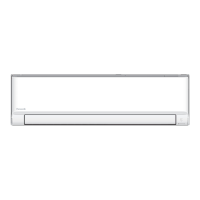
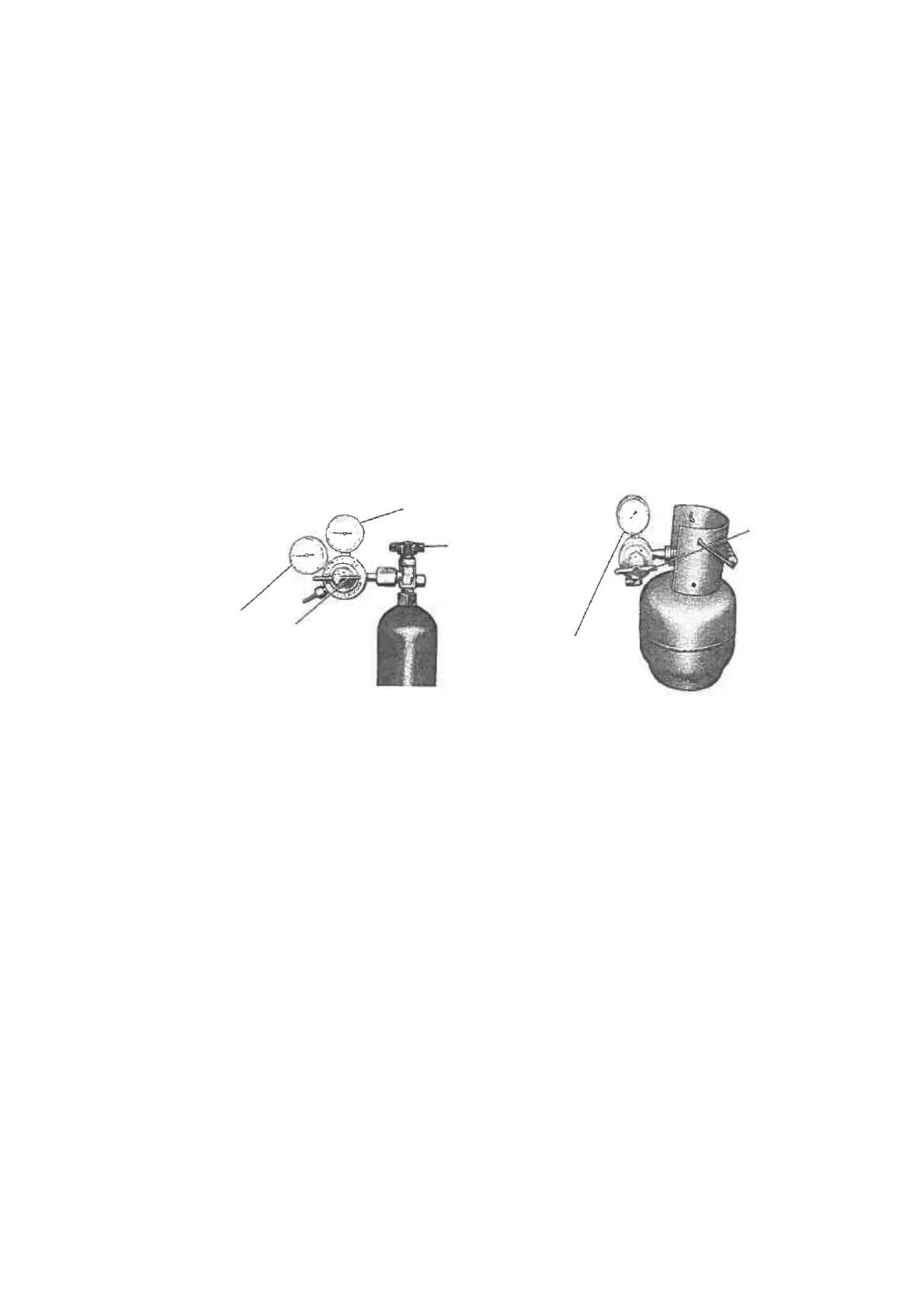